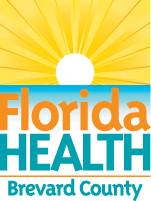Frequently Asked Questions: Boil Water Advisories
September 28, 2022

September 28, 2022
Frequently Asked Questions: Boil Water Advisories
Contact:
Cynthia Leckey, EH Director
brevard.ehs@flhealth.gov
321-633-2100
Viera, Fla. — Below are some frequently asked questions regarding precautionary boil water notices.
- What is the proper way to disinfect my water so that it is safe to drink?
- The preferred method of treatment is boiling tap water since disinfection does not kill certain parasites, such as Cryptosporidium. Boiling water also kills harmful bacteria and viruses. The process is complete once the water is held at a rolling boil for at least one minute. Allow the water to cool before use.
- When boiling is not an option, disinfect tap water by adding eight drops of regular unscented household bleach (four to six percent strength), which is about 1/8 teaspoon or a dime sized puddle, per gallon of water. If a higher strength bleach is used (8.25 percent strength), only add seven drops of bleach. Mix the solution and let it stand for 30 minutes. If the water is cloudy after 30 minutes, repeat the procedure only one time.
Note: Use a container that has a cap or cover for disinfecting and storing water to be used for drinking. This will prevent contamination. In addition, containers for water should be rinsed with a bleach solution of one tablespoon bleach per gallon of water before reusing them.
- How should I wash my hands during a boil water advisory?
When using a public water supply, your tap water is safe for basic personal hygiene, especially when you hand wash vigorously with soap. If you are washing your hands to prepare food, if possible, you should use hand soap with either bottled water or tap water that has either been disinfected or both boiled and cooled.
- Is potentially contaminated water (where the likelihood of Cryptosporidium is not significant) safe for washing dishes or clothes?
Yes, the water is safe to use if you soak hand-washed dishes for one minute in a bleach solution made of one tablespoon of bleach per gallon of water after washing and rinsing them. Allow dishes to completely air dry. Most household dishwashers do not reach the proper temperature to sanitize dishes.
Yes, it is safe to wash clothes in tap water.
- Is potentially contaminated water safe for bathing and shaving?
The water may be used for showering, bathing, shaving and washing if care is taken not to swallow or allow water in your eyes, nose or mouth. Children and disabled individuals should have their bath supervised to ensure water is not ingested. The time spent bathing should be minimized. Though the risk of illness is minimal, individuals who have recent surgical wounds, have compromised immune systems or have a chronic illness may want to consider using bottled water or tap water that has been boiled and cooled for cleansing until the advisory is lifted.
- How should I wash fruit and vegetables and make ice?
Fruits and vegetables should be washed with water that has been boiled and cooled, with commercially-available bottled water or water that has been properly disinfected. Disinfected water is made by adding eight drops of plain unscented household bleach (four to six percent strength), which is about 1/8 teaspoon or a dime sized puddle, per gallon of water. If a higher strength bleach is used (8.25 percent strength), only add seven drops of bleach. Mix the solution and let it stand for 30 minutes. If the water is cloudy after 30 minutes, repeat the procedure only one time. Ice should be made with boiled water, bottled water or disinfected water.
- What if I have already consumed potentially contaminated water?
Even if someone has consumed potentially contaminated water from either a public water system or a private well, the likelihood of becoming ill is low. Anyone experiencing symptoms such as diarrhea, nausea, vomiting and abdominal cramps, with or without fever, should seek medical attention.
- What infectious organisms might be present in contaminated water?
Disease transmission occurs mainly by drinking contaminated water. Major organisms of concern are protozoa, such as Giardia and Cryptosporidium; bacteria, such as Shigella, E. coli, and Salmonella and viruses, such as Norovirus and hepatitis A. These organisms usually affect the gastrointestinal system, causing diarrhea, abdominal cramps, nausea and vomiting, with or without fever. These illnesses can be serious or life threatening, especially in older adults, the very young or those with immune systems that are compromised.
About the Florida Department of Health
The department, nationally accredited by the Public Health Accreditation Board, works to protect, promote and improve the health of all people in Florida through integrated state, county and community efforts.
Follow us on Facebook, Instagram and Twitter at @HealthyFla. For more information about the Florida Department of Health please visit www.FloridaHealth.gov.



Connect with DOH